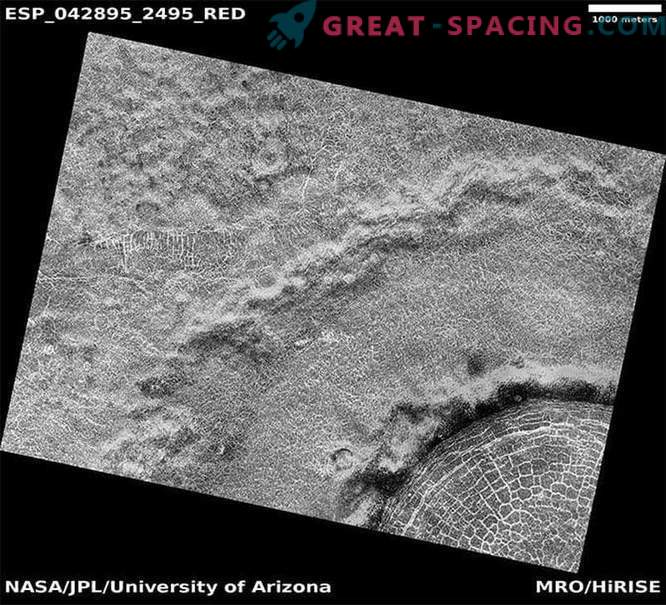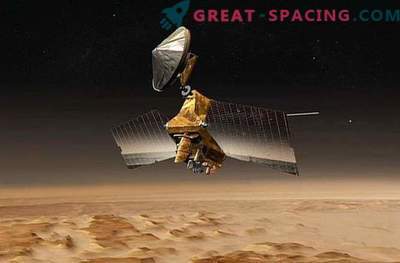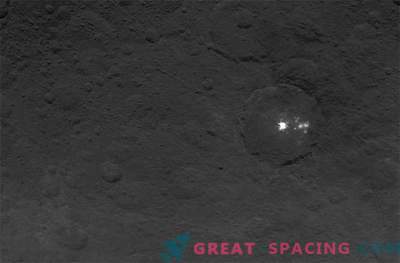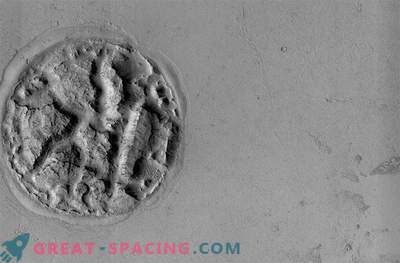
The entire crater is approximately 5 km long (or 3 miles). Its ancient relief has undergone countless thousand-year cycles of freezing and melting, which broke its surface into polygonal shapes. This process is distributed exclusively on Mars and cannot even be found on Earth.
Broken surface polygons, as you can see, become more compressed closer to the rim of the crater. HiRISE team explains it this way:
“The rim of the crater limits the formation of faults closer to the margin, creating circular cracks. This results in more rectangular polygons more in the center of the crater. Faults close to the center of the crater show a typical deformation pattern. Some of these central polygons have smaller polygons inside. In turn, the latter have even smaller triangles. This endless alternation creates a recursion effect! ”.

Starting from August 12, 2005, the MRO spacecraft studied the surface of Mars from orbit until March 2006. His scientific experiment on imaging with a high-resolution camera (from the English HiRISE), which is controlled by researchers at the University of Arizona Lunar and Planetary Laboratory, provides incredibly Detailed images of the landscape of Mars in all visible infrared wavelengths.
HiRISE is capable of very close approximation of the structures of the surface of Mars, being only in orbit of the planet. The image above was taken from a distance of 314 km (or 196 miles).











































